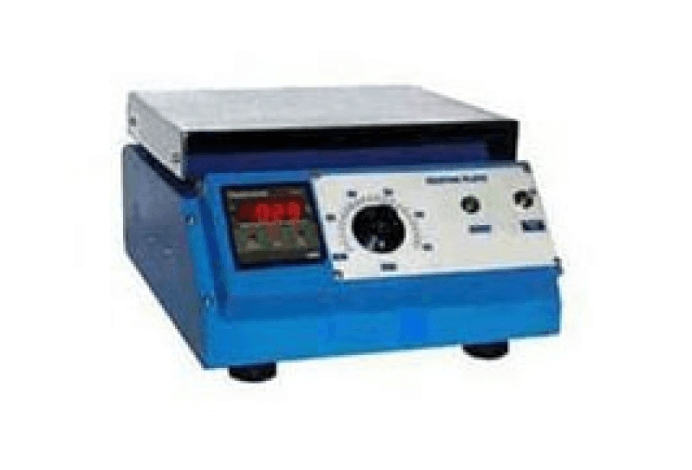Safety First: Best Practices for Operating and Maintaining Laboratory Hotplates

Laboratory hotplates are indispensable tools in scientific research and analysis, providing precise heating for various applications. However, their improper use can pose serious safety hazards. This comprehensive guide outlines best practices for safely operating and maintaining laboratory hotplates, ensuring the well-being of personnel and the longevity of equipment.
Understanding the Importance of Safety in Laboratory Hotplate Operations
The Role of Laboratory Hotplates in Scientific Research
lab hotplate play a crucial role in various scientific disciplines, including chemistry, biology, and materials science. They provide controlled heating for experiments, sample preparation, and chemical reactions, offering researchers the ability to perform tasks with precision and efficiency.
Potential Hazards Associated with Laboratory Hotplates
While laboratory hotplates are essential tools, they also present inherent risks if not used properly. Common hazards include burns from direct contact with hot surfaces, fire hazards due to flammable materials, and exposure to toxic fumes from overheating chemicals. Additionally, electrical malfunctions or improper setups can lead to accidents or equipment damage.
Best Practices for Safe Operation of Laboratory Hotplates
- Read and Follow Manufacturer’s Instructions: Before using a laboratory hotplate, carefully review the manufacturer’s guidelines and operating instructions. Pay close attention to recommended temperature settings, usage limitations, and safety precautions.
- Ensure Proper Ventilation: Use laboratory hotplates in a well-ventilated area to minimize the risk of exposure to hazardous fumes or vapors. If working with volatile substances, consider using a fume hood or other containment measures to control chemical emissions.
- Inspect Equipment Regularly: Before each use, inspect the hotplate for any signs of damage or wear. Check power cords, heating elements, and control knobs for integrity and functionality. Do not use the hotplate if any defects are detected; instead, report them to the appropriate personnel for repair or replacement.
- Use Personal Protective Equipment (PPE): Wear appropriate PPE, such as heat-resistant gloves, safety goggles, and lab coats, when operating laboratory hotplates. This protective gear helps prevent injuries from thermal burns, chemical splashes, or other accidents.
- Avoid Overloading the Hotplate: Do not exceed the maximum weight or volume capacity of the hotplate surface. Overloading can lead to uneven heating, equipment damage, or spillage of hazardous materials, posing safety risks to personnel and nearby equipment.
- Monitor Operations Closely: Never leave a laboratory hotplate unattended while in use. Continuously monitor experiments and heating processes to prevent overheating, boiling over, or other unexpected events. React promptly to any signs of malfunction or deviation from normal operation.
- Practice Safe Shutdown Procedures: After completing experiments or using the hotplate, follow proper shutdown procedures to ensure safety and conserve energy. Turn off the heating element, allow the hotplate to cool down completely, and disconnect power sources as needed.
Read also: Love What You Have, Before Life Teaches You to Lov – Tymoff
Maintenance Tips for Prolonging the Lifespan of Laboratory Hotplates
- Clean Regularly: Keep the hotplate surface clean and free of debris, spills, or residues that may interfere with heating performance or pose contamination risks. Use mild detergents and non-abrasive cleaning tools to maintain hygiene without damaging the equipment.
- Calibrate Periodically: Verify the accuracy of temperature settings and heating profiles by calibrating the laboratory hotplate according to established procedures. Regular calibration ensures reliable performance and reproducible results in scientific experiments.
- Inspect Electrical Components: Routinely inspect electrical connections, wiring, and components for signs of wear, corrosion, or overheating. Address any issues promptly to prevent electrical hazards or equipment failure.
- Replace Consumable Parts: As part of routine maintenance, replace consumable parts such as heating elements, temperature sensors, or control knobs as needed. Follow manufacturer recommendations for replacement intervals and sourcing genuine spare parts.
- Store Properly When Not in Use: When not in use, store laboratory hotplates in a clean, dry environment away from direct sunlight, moisture, or extreme temperatures. Use protective covers or cases to prevent dust accumulation and physical damage during storage.
FAQs
Q1: Can laboratory hotplates be used with all types of containers?
A1: Laboratory hotplates are compatible with a wide range of containers, including glass beakers, metal vessels, and ceramic dishes. However, it’s essential to select containers that can withstand the intended temperature range and heating conditions without shattering or melting.
Q2: How do I know if a laboratory hotplate is malfunctioning?
A2: Signs of a malfunctioning laboratory hotplate may include erratic temperature fluctuations, failure to reach desired setpoints, unusual odors or sounds during operation, or visible damage to the equipment. If you suspect a problem, discontinue use and consult qualified personnel for inspection and troubleshooting.
Q3: Can I use laboratory hotplates for heating flammable solvents or chemicals?
A3: While laboratory hotplates can safely heat many types of solvents and chemicals, caution must be exercised when working with flammable substances. Ensure proper ventilation, use appropriate containment measures, and follow established safety protocols to minimize the risk of fire or explosion.
Conclusion:
In conclusion, safety should always be the top priority when operating laboratory hotplates. By following best practices for safe operation and maintenance, researchers can minimize risks, protect personnel, and prolong the lifespan of equipment. Remember, certifiedmtp.com offers a comprehensive selection of high-quality laboratory equipment, including hotplates, to meet your research and testing needs with confidence.


![[pii_email_728b405f3855592d09be]](https://computertechlife.com/wp-content/uploads/2023/06/images-4.jpg)


